Diocese of Chartres
FREE Catholic Classes
Comprises the department of Eure-et-Loir. Dismembered by the formation of the new Diocese of Blois , in 1697, it was suppressed in 1802, the entire department of Eure-et-Loir being placed under the jurisdiction of the new Bishopric of Versailles. However, in 1822, the See of Chartres was re-established and made suffragan to the Archbishopric of Paris. The catalogue of the church of Chartres gives as its first bishops, Adventus, Optatus, and Valentinus, the last-named being contemporary with St. Martin. According to the Abbé Duchesne the Bishopric of Chartres may thus be traced back to the time of Constantine. Among its bishops the church of Chartres claims: Saints Martinus Candidus and Anianus (fifth century); St Solennis, instrumental in the conversion of Clovis ; St. Adventinus, present at the Council of Orléans in 511; St. Leobinus, at the Council of Orléans in 549; St Chaletricus at the Council of Tours in 567; St. Boetharius (about 594), chaplain to Clotaire II and, for a while the captive of Thierry, King of Burgundy ; Fulbert (1007-1029), professor and poet, whose name is identified with the history of the cathedral ; St. Yves (1090-1115), Abbot of Saint-Quentin-de-Beauvais, noted as an ecclesiastical writer and canonist, and imprisoned for two years by King Philip I for having opposed the repudiation of Queen Bertha ; John of Salisbury (1176-1180), an illustrious writer, former secretary to St. Thomas Becket and Alexander III ; Godet de Marais (1690-1709), a writer and the arch enemy of Quietism, also co-operator with Madame de Maintenon in the founding of Saint-Cyr; the future Cardinal de Latil (1821-1824), at first chaplain to the Comte d'Artois and subsequently Archbishop of Reims ; Monseigneur Clausel de Montals (1824-1853), ardently attached to Gallican ideas and noted for his opposition to the Abbé Chatel's schismatic "French Church ", and for his efforts in favor of freedom of instruction..
 Hi readers, it seems you use Catholic Online a lot; that's great! It's a little awkward to ask, but we need your help. If you have already donated, we sincerely thank you. We're not salespeople, but we depend on donations averaging $14.76 and fewer than 1% of readers give. If you donate just $5.00, the price of your coffee, Catholic Online School could keep thriving. Thank you. Help Now >
Hi readers, it seems you use Catholic Online a lot; that's great! It's a little awkward to ask, but we need your help. If you have already donated, we sincerely thank you. We're not salespeople, but we depend on donations averaging $14.76 and fewer than 1% of readers give. If you donate just $5.00, the price of your coffee, Catholic Online School could keep thriving. Thank you. Help Now >
Special honour is paid to St. Arnulphus (Arnoul), assassinated in the forest of Yveline about 534; to St. Avitus (Avit) who, in the beginning of the sixth century, founded a monastery at Châteaudun; to St. Laumer (d. 593), founder and Abbot of Saint-Martin de-Dreux, and to Blessed Bernard (end of the eleventh century), founder and Abbot of Tiron. The mystic Arnaud (twelfth century), author of the "Traité de l'oeuvre des six jours" and biographer of St. Bernard, and François-Auguste de Thou, beheaded for political reasons under Richelieu, were both Abbots of Bonneval in the Diocese of Chartres; Philippe Desportes, poet (1546-1606), and the Abbé de Saint Pierre (1658-1743), author of the famous "Projet de paix perpétuelle", were Abbots of Tiron. Among the natives of the diocese may be mentioned: Godeau, the poet, Bishop of Vence (1605-1672). known at the Hôtel de Rambouillet as "Julie's dwarf" and also J.-B. Thiers (1636-1703), curé of Champrond, noted for his disagreements with the Chapter of Chartres and his history of wigs ( Histoire des perruques ).
According to Didron, the archeologist, the Chartres cathedral is "the most curious monument in France, perhaps even in all Europe ; a unique monument."
"If elsewhere may be found more beautiful parts," said the archeologist Visconti, "nowhere else is there a more beautiful whole." The substructure of the present cathedral encloses a well and a vault around which cluster traditions of the origin of the church. The early Christians of the place, it was said, found here an altar surmounted by a statue representing a woman seated with her child upon her knees -- both the altar and statue, "Virgini paritur," had been erected by the Druids. About the year 67 Saints Altinus and Eodaldus, sent from Sens by Saints Savinianus and Potentianus, built a church over this grotto, where, during the persecution the virgin Modesta, daughter of the governor, Quirinus, was martyred, and her body flung into the well. Whatever may be held as to the time in which Saints Savinianus and Protentianus lived, it would seem that the foundation of the primitive church of Chartres, all that now can be seen, was laid in the days of Constantius Chlorus (beginning of the fourth century). The church was several times destroyed by fire. About 1020 Bishop Fulbert invited all the sovereigns of Europe to contribute towards the rebuilding of the cathedral, but three more fires (1030-1134-1194) interfered with the progress of the work. However, in 1220, Guillaume le Breton could write: "entirely rebuilt in dressed stone and terminating in a vault that may be compared to the shell of a tortoise, the cathedral of Chartres need fear nothing further from temporal fire until the Day of Judgment."
The pious enthusiasm of which Notre-Dame of Chartres was then the object is attested by the "Poème des Miracles" (1210), recently published by Antoine Thomas, and by Jean le Marchand's poem of 1262. The consecration of the cathedral occurred in 1260, and St. Louis is supposed to have attended the ceremony. The stained glass windows date back to the thirteenth century, and are the finest in the world -- they contain 3889 figures. The upper windows were presented by St. Louis, and St. Ferdinand and Queen Blanche of Castile. The porches and windows represent in magnificent symbolism the glorification of Mary. The choir enclosure with its beautifully sculptured groups dates from the sixteenth, seventeenth and eighteenth centuries.
Among the pilgrims who came to Chartres history mentions St. Louis who, in order to reach there, travelled seven leagues on foot; Philip the Fair ; Charles the Fair; Philip of Valois; John the Good who went there three times and left his pilgrim's staff, which has become the bâton cantoral of the Chapter ; Charles V (of France ) who went thither twice barefooted; Louis XI; Henry III who made eighteen pilgrimages ; Henry IV who was crowned there 27 February, 1594; Louis XIV and Popes Pascal II , Innocent II, and Alexander III. The object of this yet very popular pilgrimage is threefold: to venerate
- the statue of Notre-Dame-sous-Terre, inaugurated in 1857, and modelled after the old statue burned in 1793, being therefore a reproduction of the figure honoured by the Druids. Devotions are held in the crypt which is the largest in France ;
- the "Vierge Noire de Notre-Dame-du Pilier" (Black Virgin) in the upper church;
- the "Voile de la Vierge" (Veil of the Blessed Virgin), given to Charlemagne by Constantine Porphyrogenitus and Irene, transferred about 876 by Charles the Bald from Aachen to Chartres, and raised as a standard in 911 by Gantelme, the bishop, to put to flight the Norman Rollo. In 1360 Edward III of England, and in 1591 Henry Henry IV of France, passed reverently beneath the reliquary containing this veil, which, until the end of the eithteenth century, was considered a chemise, and "chemisettes", emblematic of this veil, were worn on the breast.
Several local congregations of women take charge of the schools and the sick: the sisters of xxyyyk.htm">Providence (founded in Chartres, 1654); the Sisters of St. Paul of Chartres (founded 1690), who have 123 establishments in the French colonies and others in the countries of the extreme East; the Sisters of the Bon-Secours (founded 1736); the sisters of the Immaculate Conception of Nogent-le-Rotrou (founded 1808), and the Sisters of Our Lady of Chartres (founded 1853). In 1900 the diocese had the following religious institutions: 1 foundling asylum, 17 infant schools, 1 school for deaf-mutes, 17 orphanages, 21 hospitals and hospices, and 2 houses of religious nurses. At the end of 1905 (the close of the Concordat period) the population was 275,433 and there were 25 pastorates, 351 succursals, or second-class parishes, and 15 curacies then remunerated by the State.
We ask you, humbly: don't scroll away.
Hi readers, it seems you use Catholic Online a lot; that's great! It's a little awkward to ask, but we need your help. If you have already donated, we sincerely thank you. We're not salespeople, but we depend on donations averaging $14.76 and fewer than 1% of readers give. If you donate just $5.00, the price of your coffee, Catholic Online School could keep thriving. Thank you.Help Now >
We ask you, humbly: don't scroll away.
Hi readers, it seems you use Catholic Online a lot; that's great! It's a little awkward to ask, but we need your help. If you have already donated, we sincerely thank you. We're not salespeople, but we depend on donations averaging $14.76 and fewer than 1% of readers give. If you donate just $5.00, the price of your coffee, Catholic Online School could keep thriving. Thank you.Help Now >
Join the Movement
When you sign up below, you don't just join an email list - you're joining an entire movement for Free world class Catholic education.
-

-
Mysteries of the Rosary
-
St. Faustina Kowalska
-
Litany of the Blessed Virgin Mary
-
Saint of the Day for Wednesday, Oct 4th, 2023
-
Popular Saints
-
St. Francis of Assisi
-
Bible
-
Female / Women Saints
-
7 Morning Prayers you need to get your day started with God
-
Litany of the Blessed Virgin Mary
Sacrifices of Faith: The Pro-Life Legacies of St. Gianna and Jessica Hanna
-

How to love God by caring for our bodies
-

Pope Francis calls for negotiations to End Russia-Ukraine War
-
Pope Francis Contemplates Return to U.S. for United Nations Assembly Address
-
Pope Francis Calls on Faithful to Embrace Faith, Hope, and Charity in New Teaching Series
Daily Catholic
 Daily Readings for Sunday, April 28, 2024
Daily Readings for Sunday, April 28, 2024 St. Peter Chanel: Saint of the Day for Sunday, April 28, 2024
St. Peter Chanel: Saint of the Day for Sunday, April 28, 2024 Prayer before a Crucifix: Prayer of the Day for Sunday, April 28, 2024
Prayer before a Crucifix: Prayer of the Day for Sunday, April 28, 2024- Daily Readings for Saturday, April 27, 2024
- St. Zita: Saint of the Day for Saturday, April 27, 2024
- Prayer for the Dead # 2: Prayer of the Day for Saturday, April 27, 2024
![]()
Copyright 2024 Catholic Online. All materials contained on this site, whether written, audible or visual are the exclusive property of Catholic Online and are protected under U.S. and International copyright laws, © Copyright 2024 Catholic Online. Any unauthorized use, without prior written consent of Catholic Online is strictly forbidden and prohibited.
Catholic Online is a Project of Your Catholic Voice Foundation, a Not-for-Profit Corporation. Your Catholic Voice Foundation has been granted a recognition of tax exemption under Section 501(c)(3) of the Internal Revenue Code. Federal Tax Identification Number: 81-0596847. Your gift is tax-deductible as allowed by law.


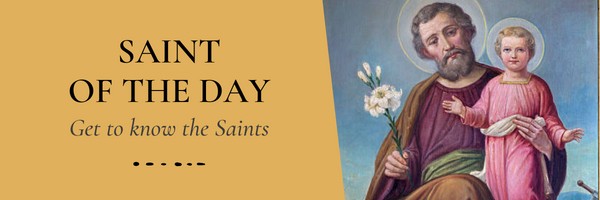
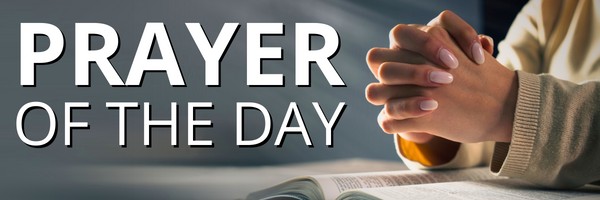

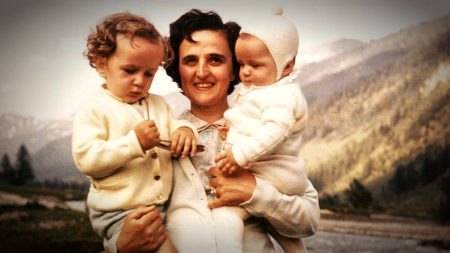
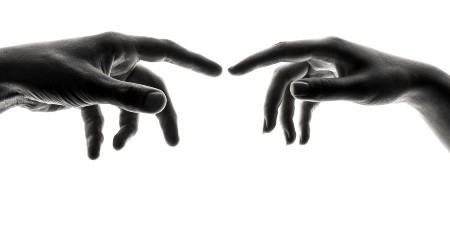
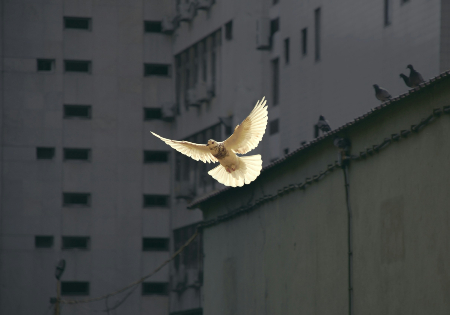
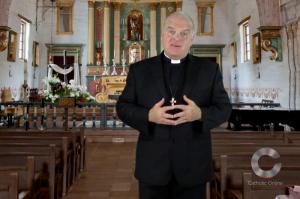 Daily Readings for Sunday, April 28, 2024
Daily Readings for Sunday, April 28, 2024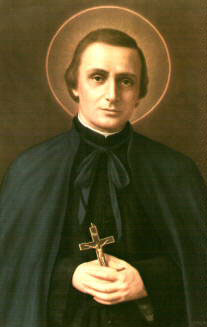 St. Peter Chanel: Saint of the Day for Sunday, April 28, 2024
St. Peter Chanel: Saint of the Day for Sunday, April 28, 2024 Prayer before a Crucifix: Prayer of the Day for Sunday, April 28, 2024
Prayer before a Crucifix: Prayer of the Day for Sunday, April 28, 2024

